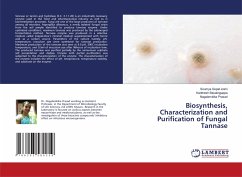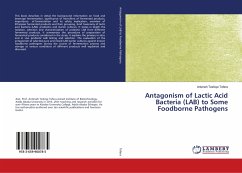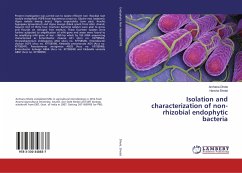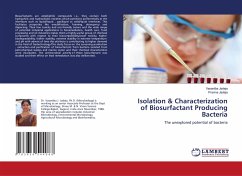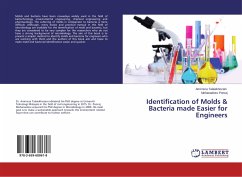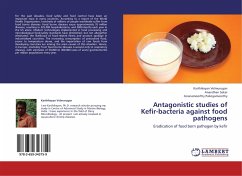
Tannin degradation by ruminal bacteria and purification of tannase
Bacterial degradation of tannins
Versandkostenfrei!
Versandfertig in 6-10 Tagen
45,99 €
inkl. MwSt.

PAYBACK Punkte
23 °P sammeln!
Tannins are the secondary polyphenolic compounds known primarily for their ability to bind and precipitate proteins and other macromolecules. The ingestion of complex polyphenols by animal leads to decreased feed intake, lower nutrient utilization and even death at higher level of intake. Hydrolysable tannins and condensed tannins (proanthocyanidins) are two different groups of these compounds that differ in their nutritional and toxic effects. The condensed tannins have a more profound digestibility-reducing effect than hydrolysable tannins, whereas the latter may cause varied toxic manifesta...
Tannins are the secondary polyphenolic compounds known primarily for their ability to bind and precipitate proteins and other macromolecules. The ingestion of complex polyphenols by animal leads to decreased feed intake, lower nutrient utilization and even death at higher level of intake. Hydrolysable tannins and condensed tannins (proanthocyanidins) are two different groups of these compounds that differ in their nutritional and toxic effects. The condensed tannins have a more profound digestibility-reducing effect than hydrolysable tannins, whereas the latter may cause varied toxic manifestations due to hydrolysis in rumen. This work has been carried out to isolate potential tannin degraders from gastrointestinal tract and rumen of animals, to purify the key enzyme, tannase and to evaluate the degradation of tannins in feeds using the potential isolates.



